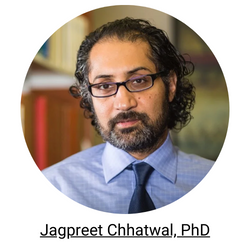NewsJun | 9 | 2023
Research Spotlight: Estimated Reductions in Opioid Overdose Deaths with Sustainment of Public Health Interventions in Four US States.

Jagpreet Chhatwal, PhD, Director of the Institute for Technology Assessment at Massachusetts General Hospital and an associate professor of Radiology at Harvard Medical School, is the lead author of a new paper in JAMA Network Open, Estimated Reductions in Opioid Overdose Deaths with Sustainment of Public Health Interventions in Four US States.
What was the question you set out to answer with this study?
Despite ongoing efforts, opioid overdose deaths in the US continue to rise – In 2022, over 75,000 people died from an opioid-related overdose. To address the ongoing opioid crisis, the National Institutes of Health in 2019 launched one of the most ambitious implementation studies, the HEALing Communities Study, in 67 communities across four U.S. states: Kentucky, Massachusetts, New York, and Ohio.
This article investigated the impact of sustaining—or not sustaining—public health interventions like the ones included in the HEALing Communities Study on the reduction in opioid-related overdose deaths in four US states.
What methods or approaches did you use?
The authors used mathematical modeling to simulate the opioid epidemic in Kentucky, Massachusetts, New York, and Ohio—four states highly impacted by the opioid epidemic.
What were your conclusions?
The study found that compared with the status quo, a multipronged approach to interventions that includes elements of prevention, harm reduction and treatment does have the ability to reduce opioid overdose deaths in all four states. The mathematical model predicted that opioid overdose deaths could decrease by 13–17% in Kentucky, 17–27% in Massachusetts, 15–22% in New York, and 15–22% in Ohio after two years with the interventions in place.
Furthermore, the study found that sustaining these interventions for three additional years could reduce the annual number of opioid overdose deaths at the end of five years by 18–27% in Kentucky, 28–46% in Massachusetts, 22–34% in New York, and 25–41% in Ohio.
Of note, they found that positive gains associated with the implementation of public health interventions for 2 years could be washed out if interventions are not sustained beyond the initial 2-year intervention period.
What are the potential clinical implications of your work?
Sustained implementation of a combination of interventions is critical for reducing the annual number of opioid overdose deaths and preventing deaths from rising again in states highly affected by the opioid epidemic.
Continuing the programs that provide medication for opioid use disorders as well as naloxone was found to be very effective at reducing opioid use deaths and preventing them from increasing again in the future.
What are the next steps?
There is a need to increase public awareness about the importance of the sustainment of public health interventions to have a meaningful impact on the reduction in overdose deaths.
The research was supported by the National Institute on Drug Abuse, part of the National Institutes of Health (NIH).
Paper Cited:
.
Type
Centers and Departments
Topics
Check out the Mass General Research Institute blog
Bench Press highlights the groundbreaking research and boundary-pushing scientists working to improve human health and fight disease.
Support Research at Mass General
Your gift helps fund groundbreaking research aimed at understanding, treating and preventing human disease.
